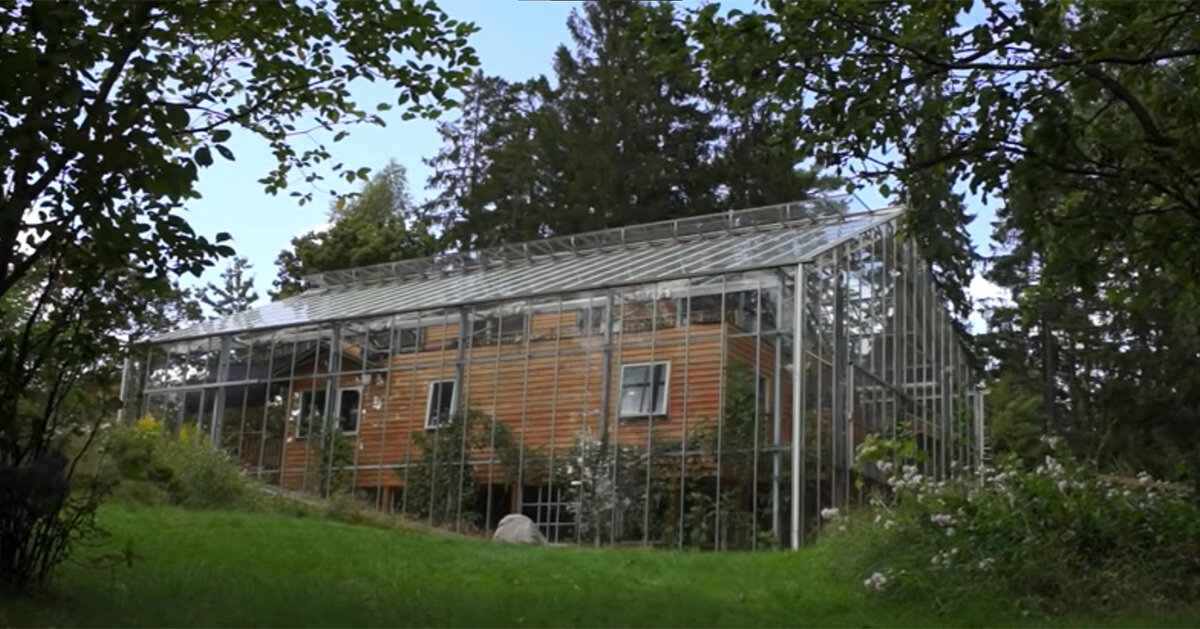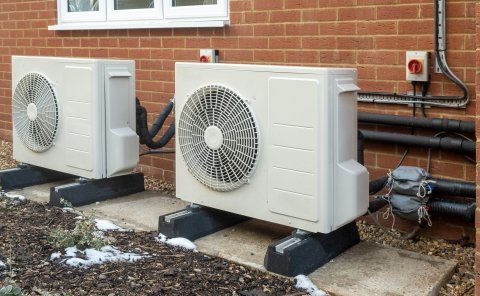sburns
Well-known member
Or a motorbike? Is there another more efficient way to heat your home no matter the size?No need to stay home, just don't own a brodozer and a giant house...
Or a motorbike? Is there another more efficient way to heat your home no matter the size?No need to stay home, just don't own a brodozer and a giant house...
Low hanging fruit is less windows. Look at a house in northern ontario vs southern ontario or an older apartment with punchout windows instead of almost floor to ceiling. Typical current wall construction is in the ballpark of R25 to R30. Typical windows are in the ballpark of R4. Assuming the house is well sealed, cut your windows square footage in half and you should expect your heating/cooling bill to be roughly cut in half. The vast majority of people (and especially condos) go the other way.Or a motorbike? Is there another more efficient way to heat your home no matter the size?
Or go with more windows or all glass.Low hanging fruit is less windows. Look at a house in northern ontario vs southern ontario or an older apartment with punchout windows instead of almost floor to ceiling. Typical current wall construction is in the ballpark of R25 to R30. Typical windows are in the ballpark of R4. Assuming the house is well sealed, cut your windows square footage in half and you should expect your heating/cooling bill to be roughly cut in half. The vast majority of people (and especially condos) go the other way.
For a retrofit, heatpump will be far cheaper per btu in the house during much of the year. Depending on the heat pump and your alternate heat source, financial crossover occurs somewhere between zero F and zero C for current low-temp heat pump models.
EDIT:
On the flipside to your question is a group of people currently petitioning government for code changes to greatly increase ventilation requirements. Currently you need something like 0.5 air changes per hour and they want mechanical ventilation for six air changes per hour. That is a hell of a lot of unconditioned (or in the case of hrv/erv moderately conditioned) air that needs to be temp/humidity adjusted. On a typical two-storey subdivision house, that is about 400 cfm. That would roughly be a kitchen range hood at full blast (by the time ducting losses are accounted for).

Heat pump costs more than a/c. It has less than a handful of different parts, most of the premium is in profit. As natural gas continues to increase, paying for heat pump becomes more viable. If your natural gas bill is less than $1000 a year, a heat pump may never pay off financially. If it is two or three times, saving $1000 a year is easily doable and your roi is far less than the life expectancy of the heat pump (<5 years roi).Or go with more windows or all glass.

swedish family envelops home in greenhouse to warm up stockholm weather
www.designboom.com
I see what you are saying, but aren't heat pumps like twice the cost of a regular furnace to install?
All seems like a no win situation.
I really think my fireplace needs to be started up....
.......Heat pump costs more than a/c. It has less than a handful of different parts, most of the premium is in profit. As natural gas continues to increase, paying for heat pump becomes more viable. If your natural gas bill is less than $1000 a year, a heat pump may never pay off financially. If it is two or three times, saving $1000 a year is easily doable and your roi is far less than the life expectancy of the heat pump (<5 years roi).
As for total installed cost, that can vary but isnt nearly as straight forward as double. If you install a/c plus gas furnace, that is about double gas furnace only but you gained a/c. If you are replacing a/c that is dead, heat pump seems like a no-brainer (especially because JT gives you $5000 of our money for heat pump and zero for a/c)
Forgot you got me blocked probably, I've not done a ton of research on this, can someone chime in and let me know if this plumbed into the existing duct workDoes the heat pump connect to your already existing duct work?

Did you block yourself? Don't let me interfere with your conversation...Forgot you got me blocked probably, I've not done a ton of research on this, can someone chime in and let me know if this plumbed into the existing duct work
I'm using my post as a reference. some people has a thicker skin than othersDid you block yourself? Don't let me interfere with your conversation...
No those have a fan and heat exchanger inside. Mini split units cheap and efficient.Forgot you got me blocked probably, I've not done a ton of research on this, can someone chime in and let me know if this plumbed into the existing duct work
Some parts of the US use similar condensers with a coil pack in conventional ducting. That style system seems unobtainable in Canada.aNo those have a fan and heat exchanger inside. Mini split units cheap and efficient.
Sent from the future
While I agree with this statement, the other impacts are felt as prices keep rising to make up for the continually increasing costs.No need to stay home, just don't own a brodozer and a giant house...
From the condo developer's view the interest is in how many units can he get out of the lot. I've seen energy wasting snow melt systems three time the needed size but that let them use the space for another salable unit. The developer isn't on the hook for the energy costs.Low hanging fruit is less windows. Look at a house in northern ontario vs southern ontario or an older apartment with punchout windows instead of almost floor to ceiling. Typical current wall construction is in the ballpark of R25 to R30. Typical windows are in the ballpark of R4. Assuming the house is well sealed, cut your windows square footage in half and you should expect your heating/cooling bill to be roughly cut in half. The vast majority of people (and especially condos) go the other way.
For a retrofit, heatpump will be far cheaper per btu in the house during much of the year. Depending on the heat pump and your alternate heat source, financial crossover occurs somewhere between zero F and zero C for current low-temp heat pump models.
EDIT:
On the flipside to your question is a group of people currently petitioning government for code changes to greatly increase ventilation requirements. Currently you need something like 0.5 air changes per hour and they want mechanical ventilation for six air changes per hour. That is a hell of a lot of unconditioned (or in the case of hrv/erv moderately conditioned) air that needs to be temp/humidity adjusted. On a typical two-storey subdivision house, that is about 400 cfm. That would roughly be a kitchen range hood at full blast (by the time ducting losses are accounted for).

